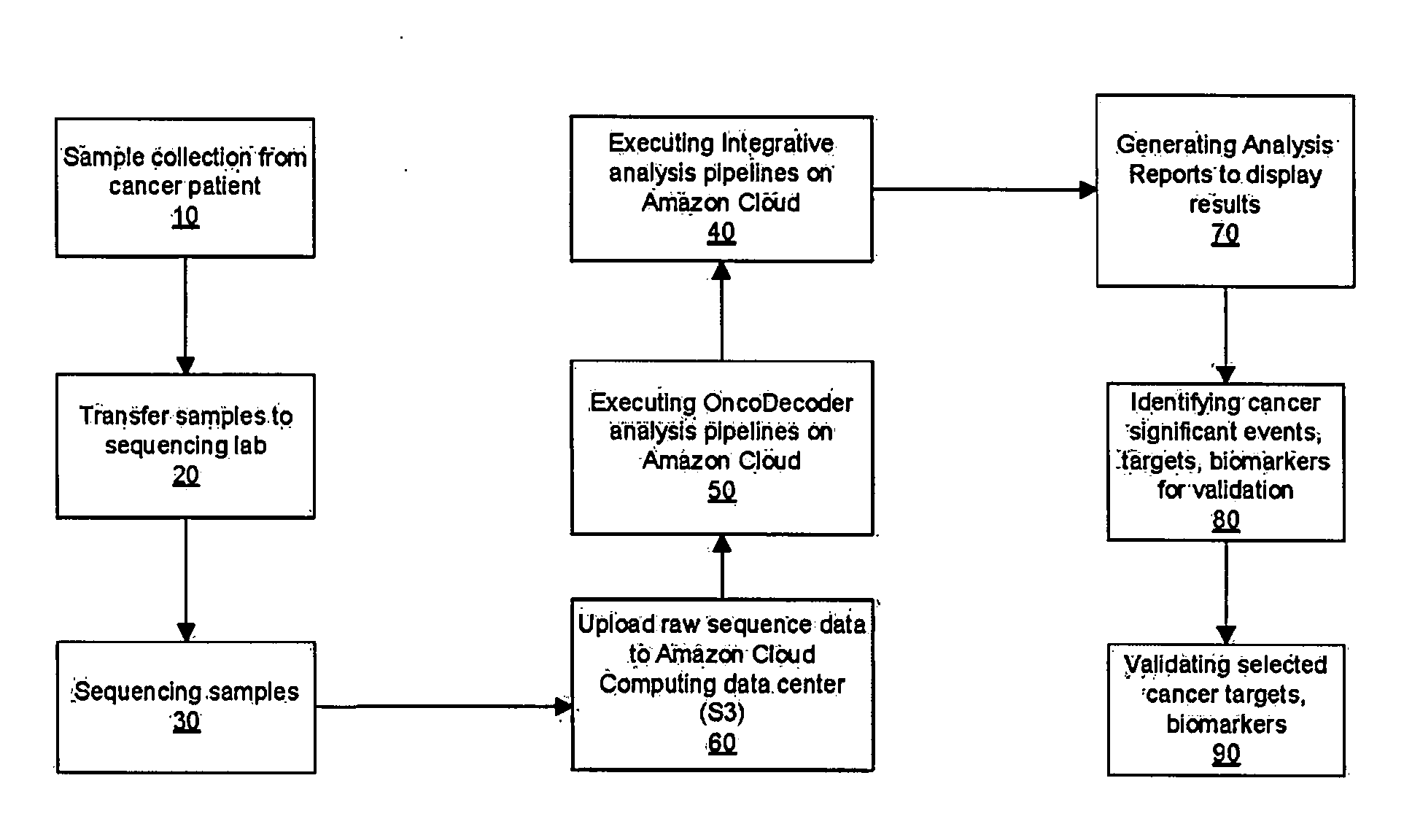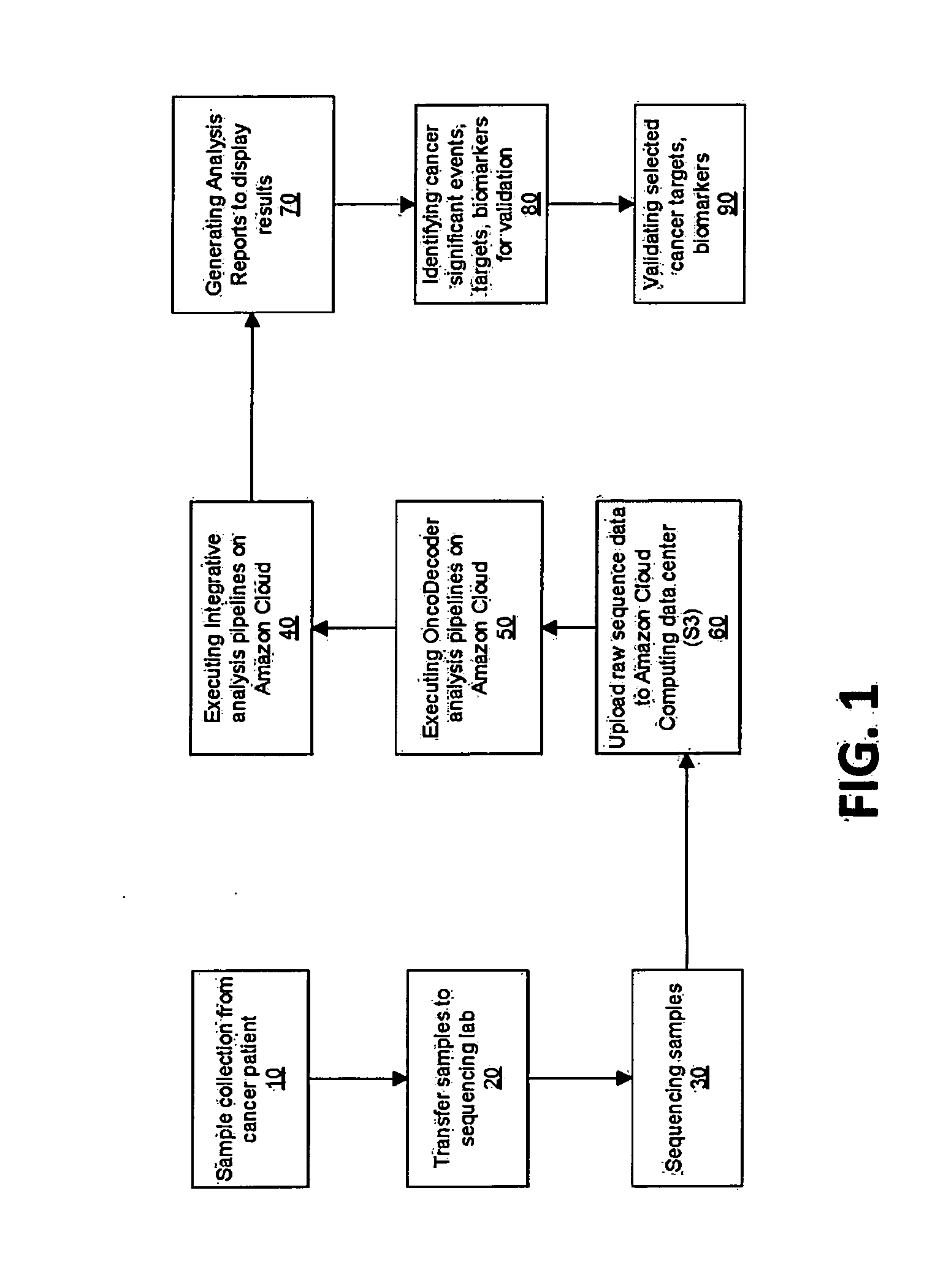Systems and methods for cancer-specific drug targets and biomarkers discovery
a cancer-specific drug and biomarker technology, applied in the field of systems and methods for cancer-specific drug targets and biomarkers discovery, can solve the problems of processing one data type at a time without data, affecting the quality of cancer-specific drugs, and generating huge ngs data from ngs platforms, so as to achieve minimal hardware requirements and maintenance, and high throughput of multiple samples
- Summary
- Abstract
- Description
- Claims
- Application Information
AI Technical Summary
Benefits of technology
Problems solved by technology
Method used
Image
Examples
Embodiment Construction
[0041]In the following description, for purposes of explanation and not limitation, specific details are set forth, such as particular systems, computers, devices, components, techniques, computer language, algorithms, software products and systems, hardware, etc. in order to provide a thorough understanding of the present invention. However, it will be apparent to skilled in the art that the present invention may be practiced in other embodiments that depart from these specific details. Detailed descriptions of well-known systems, computers, devices, components, techniques, computer language, algorithms, software products and systems, hardware are omitted so as not to obscure the description of the present invention.
[0042]Turn now descriptively to the drawings, in which similar reference characters denote similar elements throughout the several view. FIG. 1 illustrates the workflow of the present invention as a cloud-based next generation sequencing, data analysis, sample tracking ...
PUM
 Login to View More
Login to View More Abstract
Description
Claims
Application Information
 Login to View More
Login to View More - R&D
- Intellectual Property
- Life Sciences
- Materials
- Tech Scout
- Unparalleled Data Quality
- Higher Quality Content
- 60% Fewer Hallucinations
Browse by: Latest US Patents, China's latest patents, Technical Efficacy Thesaurus, Application Domain, Technology Topic, Popular Technical Reports.
© 2025 PatSnap. All rights reserved.Legal|Privacy policy|Modern Slavery Act Transparency Statement|Sitemap|About US| Contact US: help@patsnap.com



